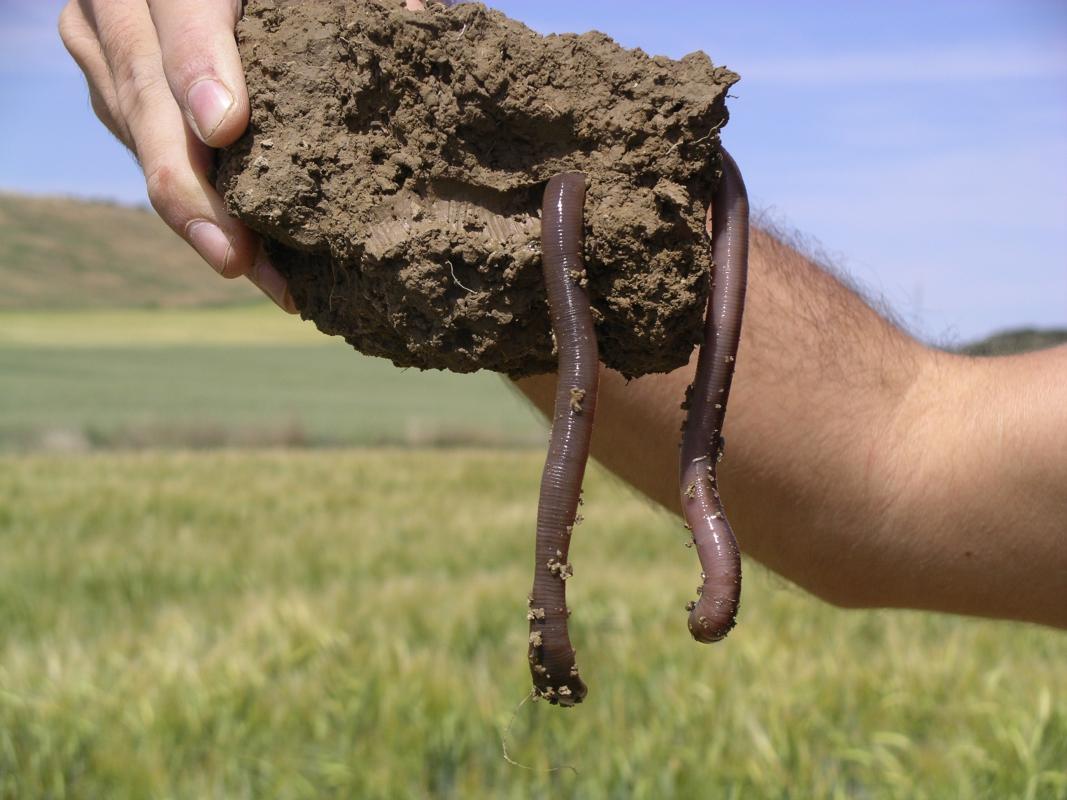Results & impact 10 October 2025
- Home
- Press area
- Press releases
- global earthworm map
The first global earthworm map reveals substantial diversity that is now under threat from climate change

Earthworms are seen as "ecosystem engineers", and are vital for soil quality © I. Virto, iDiv
Earthworms represent a vast amount of biomass, often greater than that of all the mammals in the same area. They dig holes that air the soil, eat organic debris and mix soil components, and thus participate in efficient ecosystem functioning. They provide a wide range of ecosystem services, such as nutrient provision, freshwater supply, carbon storage, climate mitigation or seed dispersal. They are therefore seen as highly important "ecosystem engineers".
Soil biodiversity worldwide should not be overlooked
Although the role played by earthworms in ecosystems is well known, the same could not be said for their distribution on a global level prior to this study, which associated almost all the world's earthworm specialists. In particular, it revealed that belowground biodiversity patterns did not match those for organisms living above ground.
"The study revealed that unlike above-ground species, local earthworm diversity was greater in temperate zones", says Raphaël Marichal, an earthworm specialist with CIRAD, who contributed to the study. "However, tropical zones have huge numbers of endemic species, and overall diversity is therefore greater in the tropics, particularly since many tropical earthworm species have yet to be described."
The study also confirmed the importance of taking account of soil biodiversity in order to pinpoint biodiversity hotspots worldwide.
Humidity and temperature are the main two factors for earthworm communities
The researchers also assessed the environmental factors that determine the number of earthworm species, and their abundance and biomass. They observed that it was factors relating to rainfall and temperature that had the most significant effects. "Based on these strong climate effects, we conclude that climate change could cause shifts in earthworm communities and change the functions and services ecosystems provide " , says Nico Eisenhauer of iDiv and Leipzig University. "Given their role as ecosystem engineers, we are concerned about potential cascading effects on other organisms like microbes, soil insects and plants."
Reference
Global distribution of earthworm diversity. Phillips HRP et al. Science. 2019
* led by the German Centre for Integrative Biodiversity Research (iDiv) and Leipzig University



























